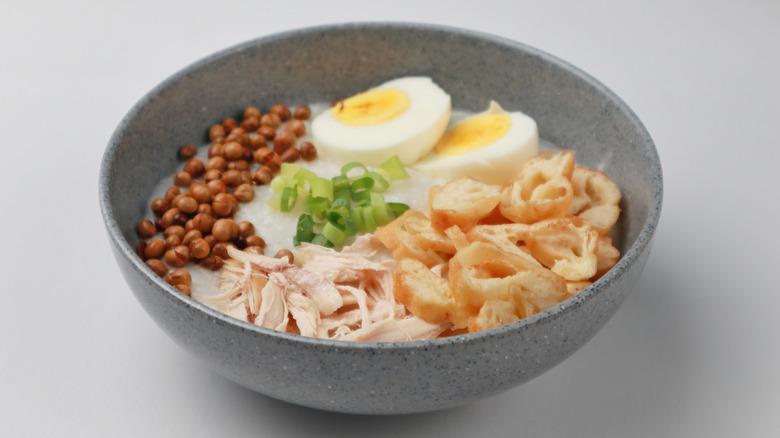Potatoes porridge
Not to be confused with tarot. It is the most widely cultivated species of several plants in the family Potatoes porridge that are used as vegetables for their corms, leaves, and petioles.

The English term taro was borrowed from the Māori language when Captain Cook first observed Colocasia plantations there in 1769. In India, it is widely used in the Odisha region. In Cyprus, Colocasia has been in use since the Roman Empire. It is usually cooked with celery and pork or chicken, in a tomato sauce in casserole. Baby” kolokasi is called “poulles”: after being fried dry, red wine and coriander seed are added, and then it is served with freshly squeezed lemon. In Madagascar, it is known as saonjo. It is called eddo in Liberia.
The leaves are know are known as dasheen bush bhaji by Indo-Trinidadian and Tobagonians. It was borrowed in Latin as colocasia, hence the genus name Colocasia. Taro is among the most widely grown species in the group of tropical perennial plants that are referred to as “elephant ears” when grown as ornamental plants. In the Philippines, the whole plant is usually referred to as gabi, while the corm is called taro. Taro is very popular flavor for milktea in the country, and just as popular ingredient in several Flipino savory dishes such as sinigang.
This section needs additional citations for verification. Please help improve this article by adding citations to reliable sources. Linnaeus originally described two species, Colocasia esculenta and Colocasia antiquorum, but many later botanists consider them both to be members of a single, very variable species, the correct name for which is Colocasia esculenta. Taro is related to Xanthosoma and Caladium, plants commonly grown ornamentally, and like them, it is sometimes loosely called elephant ear.
Colocasia esculenta is a perennial, tropical plant primarily grown as a root vegetable for its edible, starchy corm. The plant has rhizomes of different shapes and sizes. They are dark green above and light green beneath. They are triangular-ovate, sub-rounded and mucronate at the apex, with the tip of the basal lobes rounded or sub-rounded.
The female portion is at the fertile ovaries intermixed with sterile white ones. Neuters grow above the females, and are rhomboid or irregular orium lobed, with six or eight cells. The appendage is shorter than the male portion. Colocasia esculenta is thought to be native to Southern India and Southeast Asia, but is widely naturalised. Taro was probably first native to the lowland wetlands of Malaysia, where it is called taloes.
It is also found in the Greek island of Ikaria and cited as a vital source of food for the island during WW II. In Turkey, Colocasia esculenta is locally known as gölevez and mainly grown on the Mediterranean coast, such as the Alanya district of Antalya Province and the Anamur district of Mersin Province. In Macaronesia this plant has become naturalized, probably as a result of the Portuguese discoveries and is frequently used in the macaronesian diet as an important carbohydrate source. In the southeastern United States, this plant is recognized as an invasive species. Taro is one of the most ancient cultivated crops. Taro is found widely in tropical and subtropical regions of South Asia, East Asia, Southeast Asia, and Papua New Guinea, and northern Australia and in Maldives. Archaeological traces of taro exploitation have been recovered from numerous sites, though whether these were cultivated or wild types can not be ascertained.